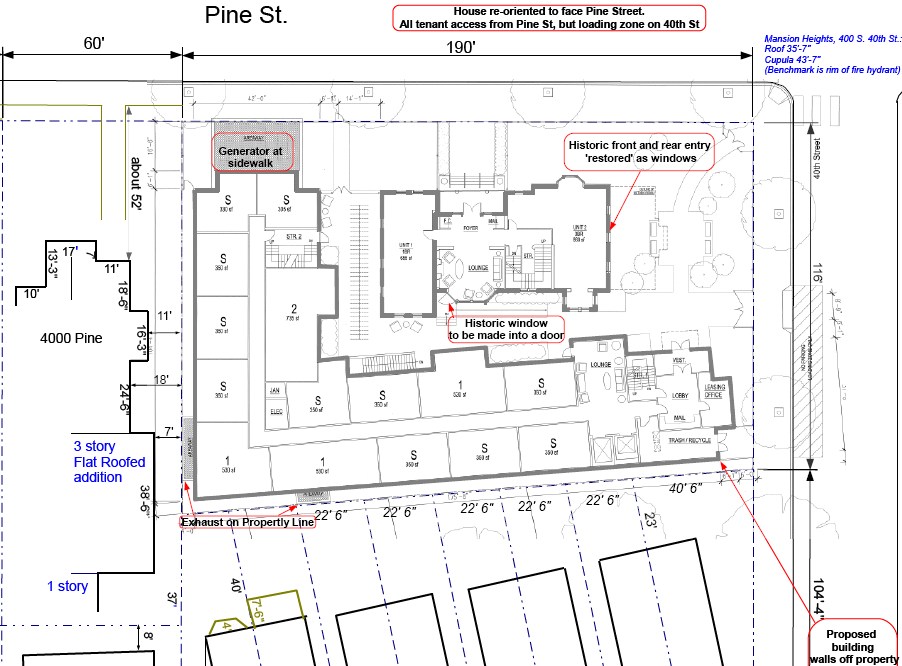40th & Pine Streets, Philadelphia
The so called "Compromise" Scheme Saves Little.
On May 8, 2015 we wrote: "...when analyzed,
the scheme that Penn & the developer showed to the Spruce Hill
Zoning Committee offers little in the way of preservation. The house
itself would be a shell, reoriented to face Pine Street; it would have
been shadowed and obscured by an apartment building that choked it."
These assertions deserve further explanation. The scheme consists
of just two documents. The first is a perspective rendering, and
the second is the site and floor plan.
A review of both shows that the house will no longer front on 40th
Street. All of the tenants will enter the property and the buildings through entrances that face Pine Street.
Creating a grand entrance on Pine Street is a major misrepresentation
of the historic record and can not be considered good
preservation. Nor would it contribute to the plans for 40th Street and the trolley portal.
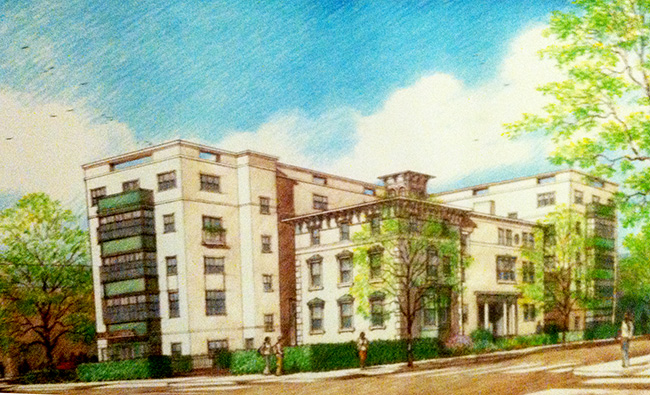
Rendering of smaller "abandoned project" shown Spruce Hill Community Association (www.Westphillylocal.com)
|
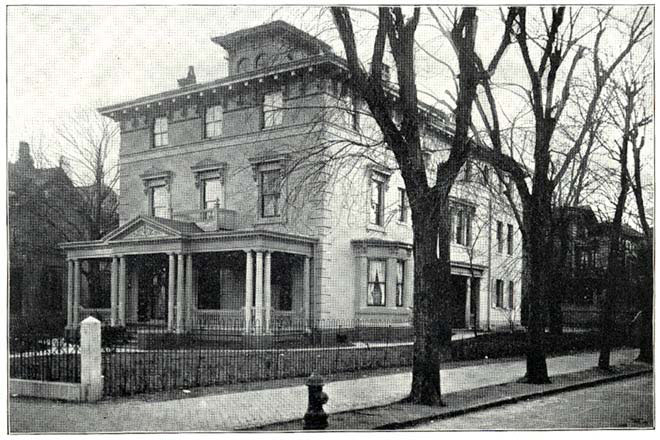
|
Making
the mansion face Pine Street is falsifying
history, not restoration. Even so, the project illustrated above was better than actual plan offered (see proposed plan below). For example, in the rendering the apartment building's entrance is set back and faces 40th Street. Also note its first floor appears to be lower than the house's and overall height correspondingly
reduced.
|
Compare
'restoration' plan to actual historic view (c.1900). The
Pine Street doorway is clearly a side entrance. Also note the
first floor front windows are taller than the second floor windows.
from scan of King's Philadelphia an Philadelphians at Places in time website
|
Another problem is that the rendering shown is misleading. It is
a rendering from an earlier project that, as Mr. Weiss told the
Spruce Hill Zoning Committee, was abandoned. So the
rendering
does not actually depict the apartment building proposed.
A number of specific differences can be identified between the
abandoned project and the scheme to 'save' the house. This can be
done by comparing with the proposed site plan. For example, in
the rendering the apartment building's entrance faces 40th
Street. The
first floor appears to be sunk low and is set back behind hedges and a
tree. However on the plan, the entrance faces into the courtyard,
and there is just 6' of setback - clearly not enough room for hedges
and
tree.
Another preservation problem relates to the house itself. As
shown in the plan, not much will be left of the original
materials. For all practical purposes
it will be a shell. Almost everything will be replaced. The
historic front and rear doorways will be turned into windows, and a
door will be punched through the historic bay of the one room that is
to be restored. Interior circulation will be from north to south,
rather than from east to west. Altogether, it
will no longer provide a potential source of information for the
house's evolution, design, materials and use.
Perhaps more important from the public's perspective is the impact on
the surrounding historic neighborhood. The apartment building
proposed
in the plan would wall off visual relationship of the mansion
from its surroundings. The only unlocked entrance on 40th street would be for trash and service. Adjacent properties would be presented with
flat 50, 55, 60 or
65' high walls, and the mansion itself would be in shadow most of the
year. Will this become the new standard for the
surviving streetcar suburb?
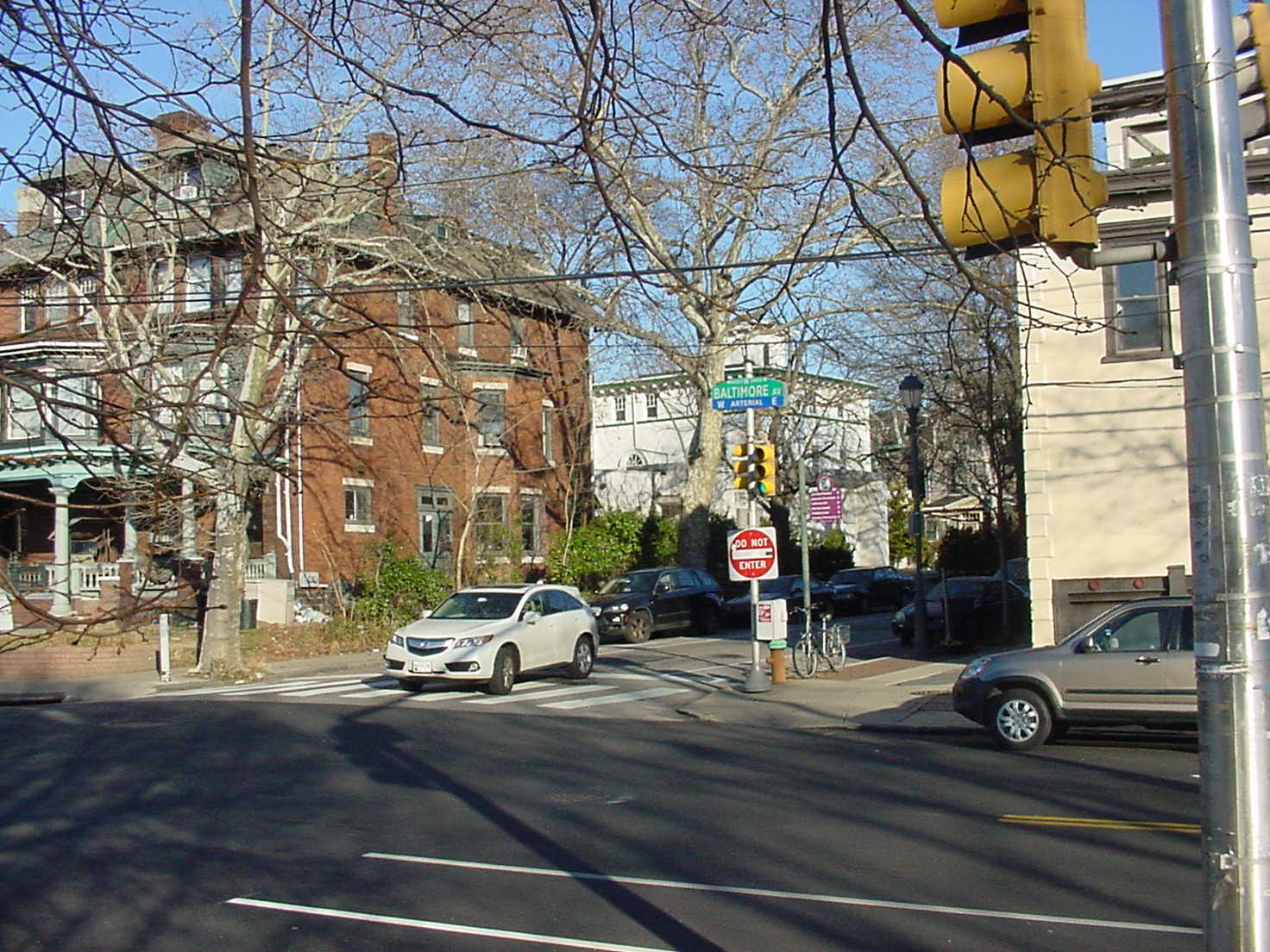
|
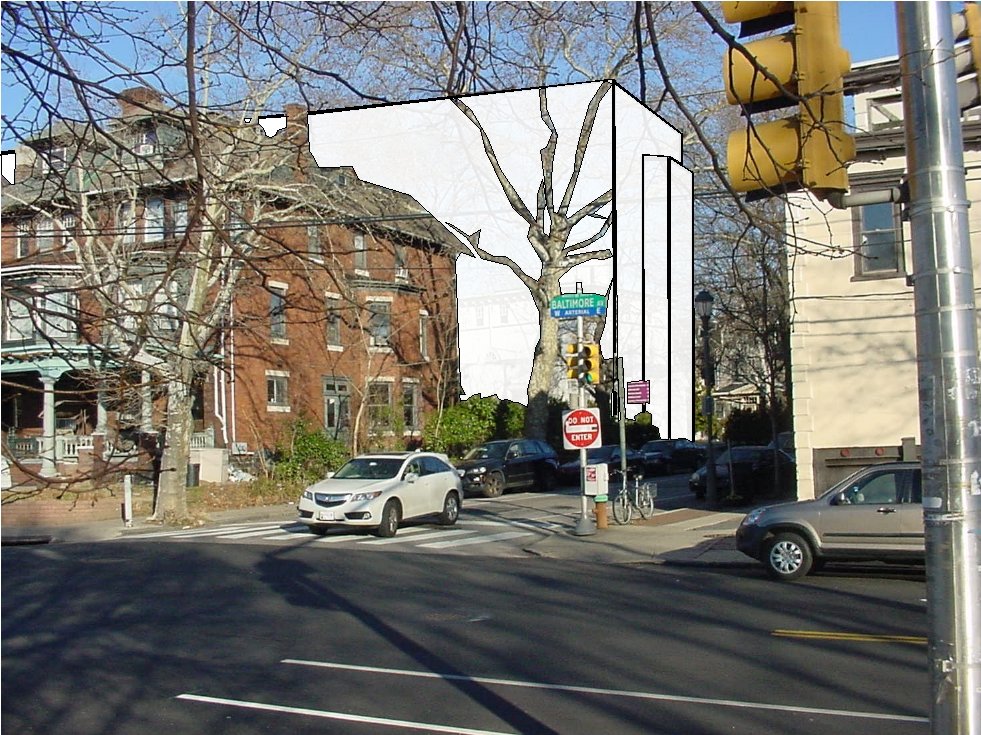
|
Present view from 40th Street trolley portal. Historic house visible to all.
|
View of mansion if apartment building was built as shown in plans.
|




